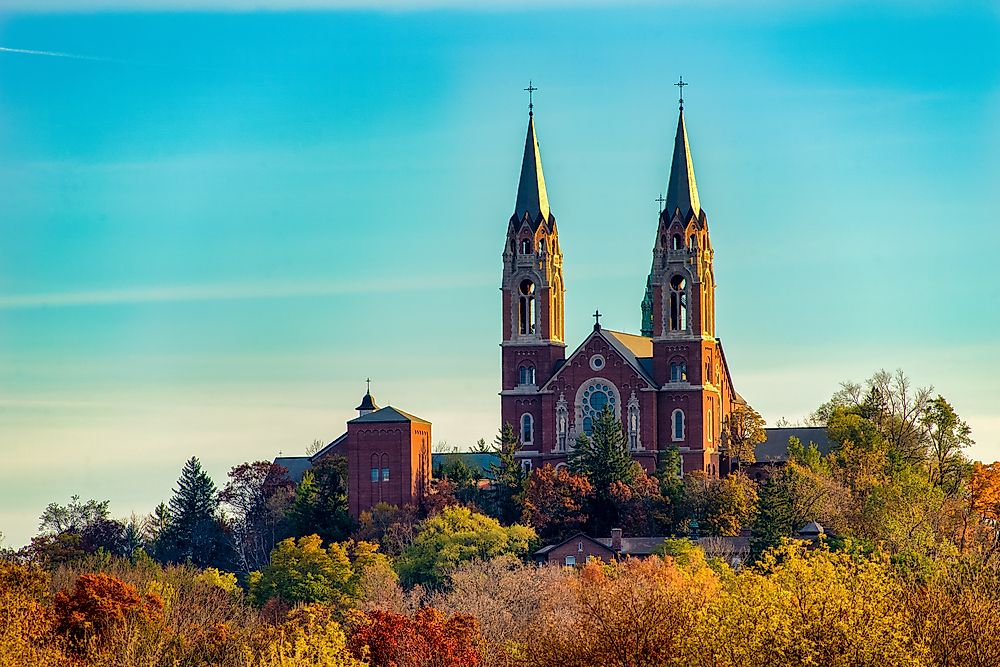Religious Beliefs In Wisconsin

Wisconsin is a state situated in the Upper Midwest area of the United States. It borrows its name from the Wisconsin River that flows across the state. Wisconsin has a population of approximately 5.8 million residents with a racial composition of 82% whites, 7% Hispanics, 6% blacks, and 3% Asians. The state allows for religious freedom and has formulated laws that protect citizens against religious discrimination. In 2016, the state was ranked the 44th most religious state in the US. Christianity is the most prevalent religion in Wisconsin with 71% of the population affiliated to the faith. People with no religious ties are at 25% of the population. The other minority religions include Jewish, Muslim, Buddhism, Hindu, and other faiths make up only 4% of the Wisconsin population.
Largest Religions in Wisconsin
Christianity
Christianity has the largest share of followers in the state of Wisconsin. Protestant Christians are the leading Christian group in the state with an estimated 44% of population aligned to the denomination. The Protestants are further sub-divided into Evangelical Protestants and Mainline Protestants. Protestantism was introduced into Wisconsin by European settlers in the early 19th century. The settlers created the first institutions such as schools and churches in Wisconsin. Catholics are the second largest Christian community in Wisconsin taking 25% of the population. Catholicism was brought into Wisconsin by Jesuit Missionaries at the start of the 17th century. Minority Christian communities in Wisconsin consist of Orthodox Christians, Jehovah’s Witness, Mormons, and other unidentified groups.
Judaism
The Jewish community in Wisconsin is a minority religious group. It only makes up 1% of the state’s adult population. The religion was introduced into Wisconsin by a fur-trader named Jacob Frank in 1793. The community of Jews grew to reach a peak of 39,000 in 1939 before dropping to 26,000 Jews currently living in the state.
Islam
Muslims are the third minority religion in Wisconsin. They make up 1% of the adult population in the state. The Islamic community in Wisconsin was established in the early 20th century. Most Muslims at the time came to the American state as students or as traders. The Muslim community in Wisconsin came together in 1950 and established Islamic institutions that cater for all residents of the area.
Hinduism
Hinduism is another minority religion in Wisconsin with less than 1% of the population practicing the religion. The religious community has established several Hindu temples in Wisconsin where Hindu believers practice their religion.
Buddhism
Buddhists in Wisconsin form a minority religious group with less than 1% of the population affiliated with the group. The community has several Buddhist centers in Wisconsin where they conduct their religious practices.
Non-religious People
People who have no religious affiliation make up 25% of Wisconsin’s population. These people are sub-divided into atheist and agnostics. Majority of the people who have no religious affiliations are young adults of between 18 and 29 years.
Religious Freedom in Wisconsin
Wisconsin has embraced diverse religious communities living in the state. It is home to numerous religious centers created by various groups of people.The state provides religious freedom for all its residents. Christianity is the dominant religion in the state and the minority religions are protected by state laws from discrimination.











